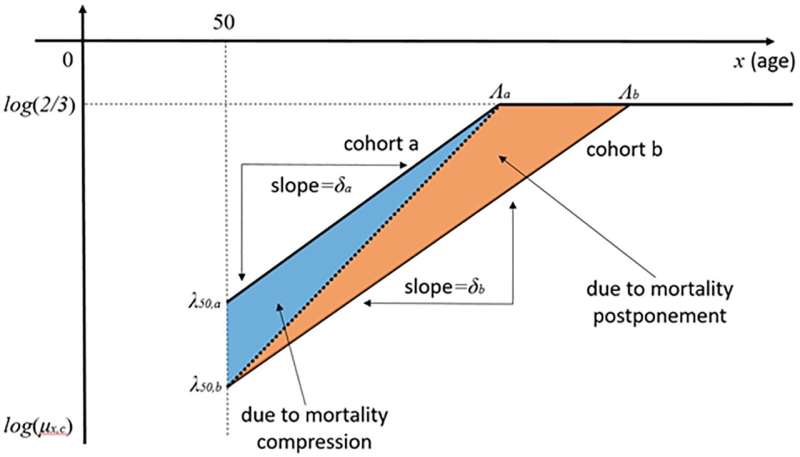April 5, 2023 report
This article has been reviewed according to Science X's editorial process and policies. Editors have highlighted the following attributes while ensuring the content's credibility:
fact-checked
peer-reviewed publication
trusted source
proofread
Lifespans into the 140s predicted by centuries-old Gompertz law

A recent paper in the journal PLOS ONE suggests that humans have yet to reach their maximum age and that there might not even be one. In the paper, "Mortality postponement and compression at older ages in human cohorts," David Mcarthy of the Terry College of Business, University of Georgia, and his former Ph.D. student, Po-Lin Wang, currently at Muma College of Business, University of Southern Florida, use mathematical modeling of longevity trends, without reference to any biological, social or medical science to extrapolate the future of human longevity.
Typically in the introductory section of an academic study, the author provides context on the paper's topic, including relevant citations to help understand what body of work the study is building on.
The first citation in the introduction is a psalm from the King James Bible, which the authors suggest indicates that ancient Hebrews, around 2,500 years ago, believed the maximum age a human could reach was 80 years old. Next, there is a citation of a poem by Horace, from which the authors suggest that the ancient Romans estimated the maximum lifespan of humans to be 100 or 110 years old.
There is the uncited reference to the current human longevity record being 122, unchanged since 1997, which is likely referring to Jeanne Calment, a wealthy French woman who holds the record for the world's most extended verified lifespan. While it is an astonishing age to reach, it has been long predicted to be feasible that someone should reach this age as an outlier. What accompanies that prediction is an expectation that there would not be anyone else close to them in age, and in fact, the next closest oldest verified lifespan is a full three years less. Currently (and I do mean currently), there are eight people over the age of 114 on the planet, all women, with the oldest being 116.
It should also be noted that the lead author of the study, David McCarthy, is an editorial board member and frequent contributor to the Journal of Pension Economics and Finance and describes himself as a policy expert. Mathematical models are commonly used for setting pension goals and life insurance premiums, and predicting the ages that people will live has a long history in the world of finance. For most of that history, a preferred mathematical law from the 19th century has been relied upon with reasonable accuracy.
Gompertz law
The Gompertz law used in the study is a 202-year-old mathematical formula to model mortality rates. The law states that mortality rates increase exponentially with age, meaning the risk of death increases by a magnitude approximately every decade after age 50. The Gompertz law is named after Benjamin Gompertz, a British mathematician who first proposed the law in 1825.
Gompertz himself only believed that his model was reliable up to the age of 85; Gompertz died at age 86. Still, at 86, Gompertz was nine years older than the life expectancy of a male born in the U.S. today.
The paper in PLOS ONE refrains from involving biology in predicting a maximum age. However, it does conclude with math alone that birth year cohorts of individuals born after 1950 should be the first to experience a significant postponement in the historical progression of mortality. By calculating a fixed mortality risk rate for each year after, the study forecasts a future where longevity records will be commonly broken after 2073, with some prediction graphs running into the 140s.
While a combination of medical advances and increased starting populations by birth year favor the extension of the maximum age, the ability to reach these more extreme lifespans will require much more than statistical chance. It will require a much deeper understanding of cellular function, DNA repair, cancer mitigation and tissue rejuvenation. It will likely require lab-assisted prefertilization genetic modifications to equip the body with a genome that can withstand 140 years of cellular replication without disruptive mutations or senescence—and that generation, along with the required knowledge, has not yet been born.
More information: David McCarthy et al, Mortality postponement and compression at older ages in human cohorts, PLOS ONE (2023). DOI: 10.1371/journal.pone.0281752
© 2023 Science X Network





















